Feature
In rural Nepal, Pact is using integrated development to break poverty's grip
Outside a modest mud-brick home in Binauna, Nepal, far from any paved road, Anita Kumari Chaudhary is reaching high into the trees that shade her small plot of land. With a long tool, she clips a few leaved branches and carries them to a nearby pen of goats who eagerly munch them down.
Two years ago, Chaudhary, now 32, had no income of her own. She and her two children depended entirely on the small sum her husband made repairing motorbikes.
“I just stayed at home and waited for him to do something for us,” she says. “I didn’t go out or talk to anyone or earn any money.”
Chaudhary’s life today couldn’t be more different. Besides goats, she farms and sells poultry and vegetables, and she’s saving for the future. About a year ago, she became a member of her ward citizen forum, or WCF, a local public body that represents villagers, advocating to government authorities for funding and other resources. Chaudhary has helped women farmers in her village get free vegetable seeds and a motor for pumping water to crops. She also heads a citizens’ committee that is monitoring the construction of a village canal to prevent flooding, which the government agreed to fund after a request from Chaudhary’s WCF.
Chaudhary credits her transformation to USAID’s Sajhedari Bikaas project, which is implemented by Pact and combines interventions in the areas of governance, livelihoods, capacity development and health to holistically improve people’s lives in 12 districts of Nepal. Sajhedari Bikaas — Nepali for “partnership for local development” — relies on Pact’s unique integrated approach. While the project’s aim is to help Nepali communities better direct their own, inclusive development, Sajhedari is taking a broad approach, tackling a range of problems that historically have stalled Nepal’s development, including poor governance, poverty, conflict and inequity.
“Each piece of Sajhedari is addressing important issues by itself,” says Basanta Pokharel, the project’s deputy chief of party. “But the pieces are also working together in support of a bigger goal. Collectively, they’re addressing systemic issues that none of them could do alone.”
Among Sajhedari’s most central components is its work to strengthen governance, particularly at the ward and village levels. To Nepal’s credit, its guidelines for local planning and governance – created as the country has worked to decentralize power after a 10-year civil war that ended in 2006 – are inclusive; they call for direct participation of communities, including women, young people and ethnic and religious minorities.
But since their adoption, the guidelines have lived largely on paper. WCFs, Nepal’s lowest-level public bodies, were not functioning; in many cases, citizens listed as members didn’t even know it, nor did they understand what WCFs were supposed to do. The next-highest bodies, village development committees, or VDCs, made up of government employees, rarely met with communities or listened to their needs, even though one of their main functions is to allocate funding to villages based on priorities identified by WCFs.
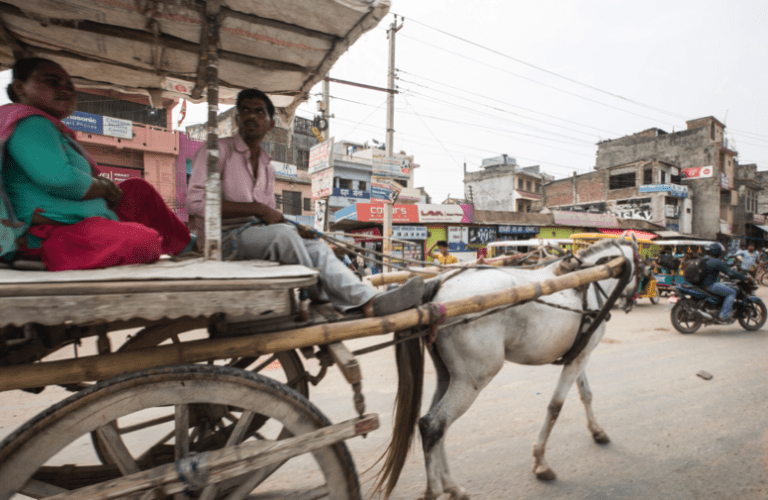
Sajhedari is using hands-on training, mentorship and capacity building to help WCFs and VDCs operate as intended. WCF members now meet regularly and understand their role and responsibilities. They’re prioritizing needs, advocating on behalf of their communities and obtaining critical funding from VDCs, which have begun listening to citizens and working with them to effectively implement development projects. In some cases, Sajhedari is funding small development projects directly, such as water pumps and road improvements, so citizens and local authorities can practice how to properly select, implement and monitor such projects.
“Increasingly, we’re seeing the local planning process working how it’s supposed to – to the benefit of all members of a community, based on their own demands,” Pokharel says.

But many other problems have long thwarted Nepal’s development.
To address both poverty and the marginalization of women, Sajhedari is using a village-banking model that Pact has employed in more than a dozen countries. Known as WORTH, the model brings women together in groups of 20 to 25 to learn how to save money and start small businesses. They use the savings to make loans to fellow members, and with credit and interest earnings, they grow their businesses and launch new ones. WORTH groups also receive literacy, numeracy and technical training, such as farming best practices. For many members – some rarely left the house and had no formal education before WORTH – the knowledge, support, friendship and confidence they gain is life-changing.
“I used to not speak out, not to my husband or to anyone,” says Mina Chaudhary, who joined a WORTH group in Kanchanpur district, near the Indian border, two years ago. “Now I am active in the community.”
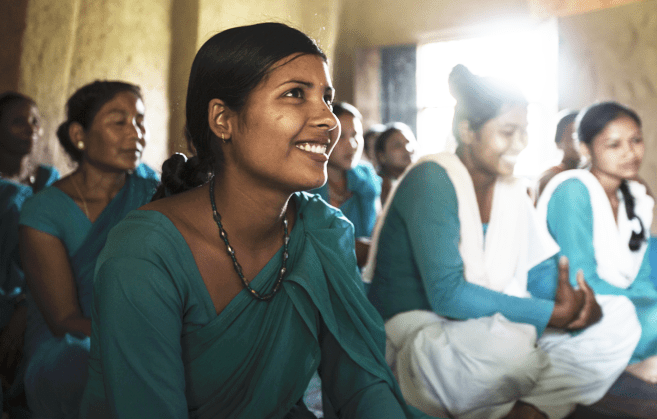
From domestic violence and land disputes to disagreements among ethnic groups, conflict also has long impeded Nepal’s development. To quell problems before they reach extremes, Sajhedari trains volunteer mediators who staff more than 100 community mediation centers in mid and far western Nepal, where anyone can get help at no cost. Between September 2013 and May 2016, the centers registered 12,336 cases, 9,956 of which were successfully resolved without intervention from higher-level authorities.
“We’re making a difference in individuals’ lives, but there’s more to it than that,” says Sajhedari’s conflict mitigation manager, Geeta Pradhan. “Say you’re in a land dispute with your neighbor. You might spend a couple hundred dollars and months to resolve it through the courts, or you might turn to violence. Instead, with mediation, now maybe that money is spent on nutrition or education for your children, and that energy goes to something productive. We’re building an environment where development can happen.”
Beyond that, Pradhan says, Sajhedari is helping to create new community leaders in the mediators it trains.
Also to help foster a new generation of Nepali leaders, Sajhedari works with the country’s youth. The project has formed 115 youth groups with a total of about 1,700 members in six western districts, providing them with life skills, leadership and vocational training, as well as training on Nepal’s local-level planning and governance process and how they can get involved. The groups have taken on causes and projects such as promoting the construction and use of toilets versus open defecation, reducing domestic violence and child marriage, creating a study center for students, and helping to repair local roads. Some groups have launched small businesses to fund their civic activities.
“Historically, youth in Nepal have been used by political parties in negative ways,” explains Srijana Chettri, Sajhedari’s gender equality and social inclusion manager. “When there are strikes, for example, you gather young men to shut down roads, burn tires and disrupt movement. Widespread unemployment has made it easier to exploit them, and unfortunately that’s led to a negative perception of youth. In fact, youth can be very powerful agents for positive change. They just need the opportunity.”
Sajhedari also includes a media component that spreads the project’s messages through radio broadcasts and builds the capacity of journalists to better cover social issues, marginalized communities, the government, the services it should provide and how citizens can take an active role.
“We’re reporting on these issues much more now, and I’m hoping to create a beat just for this,” says one journalist, Sabitri Giri, a producer at Krishnasar FM in Nepalgunj. “More people are talking about these things and asking for government services because of what they hear in our programs.”
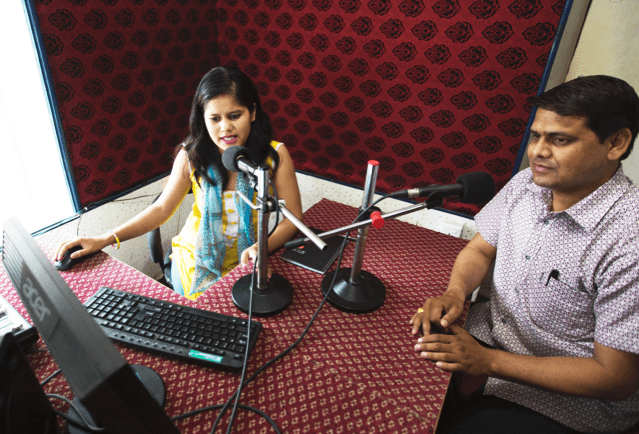
Sajhedari is also building the capacity of local NGOs and civil society groups, and it is helping the government to deliver mobile service camps where citizens – especially those who’ve had little access in the past – can obtain birth and death certificates, basic health care, disability and voter registration cards, and other public services.
Sajhedari’s pieces are not only integrated in that they share a common aim. They also deliberately leverage each other. Community mediators and WORTH and youth group members are learning about the local planning process, getting involved and joining their WCFs. They’re advocating for their needs and those of their neighbors and helping to implement and monitor development projects as Nepali law calls for. VDCs are recognizing the positive role that young people can play in Nepal’s future and including them in meetings. Journalists and WORTH leaders are spreading the word about mobile service camps and community mediation centers.
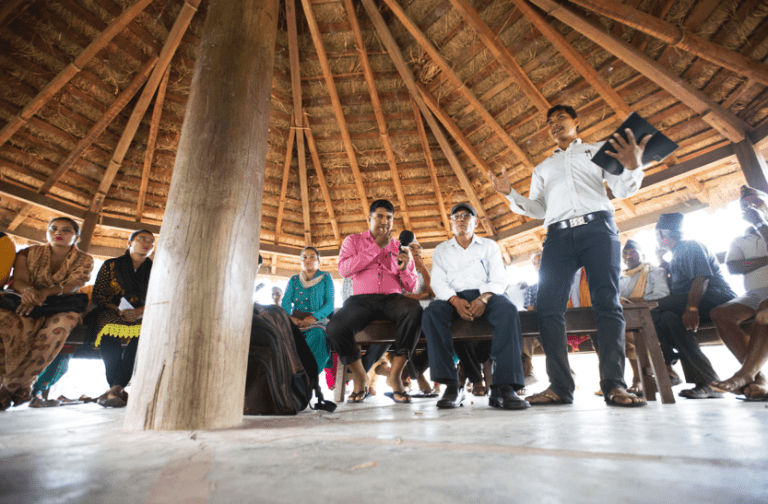
And across all of the project’s components, Sajhedari’s staff is ensuring that women and members of marginalized castes and ethnic and religious groups are included and supported.
“As a project designed for post-conflict Nepal, we’re weaving inclusion into everything we do,” Chettri says. “When certain groups are left out – when they’re not receiving government services or they don’t have opportunities or a say in decisions that affect them – that has been a major underlying factor in conflict here.”
Says Pokharel: “For the country to really move forward, Nepal’s marginalized groups must be heard.”
Anita Kumari Chaudhary, the goat farmer from Binauna, first became involved with Sajhedari as a WORTH member. With a loan and training, she expanded her family’s small garden and started selling rice, corn, pumpkins and coriander at a roadside stand. Soon she added poultry and goats, and with her income and confidence growing, she decided to join her WCF, which she first learned about at a WORTH meeting.
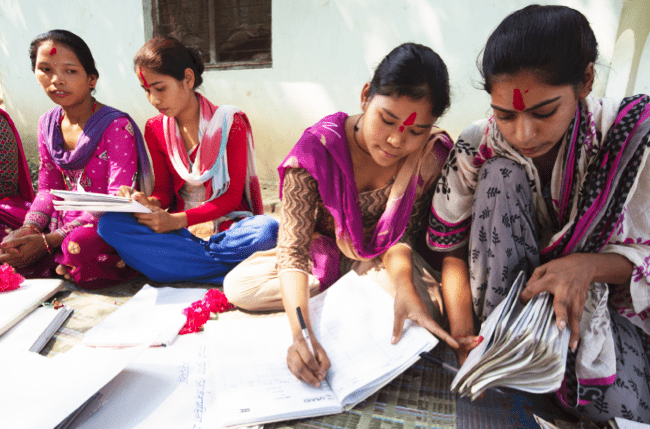
Today, she is an advocate for her family, her WORTH group and her neighbors, all of whom are accessing government resources and services they used to not know existed.
“We are stronger in many ways,” Chaudhary says. “I am stronger.”
Photography and videos by Brian J. Clark for Pact.